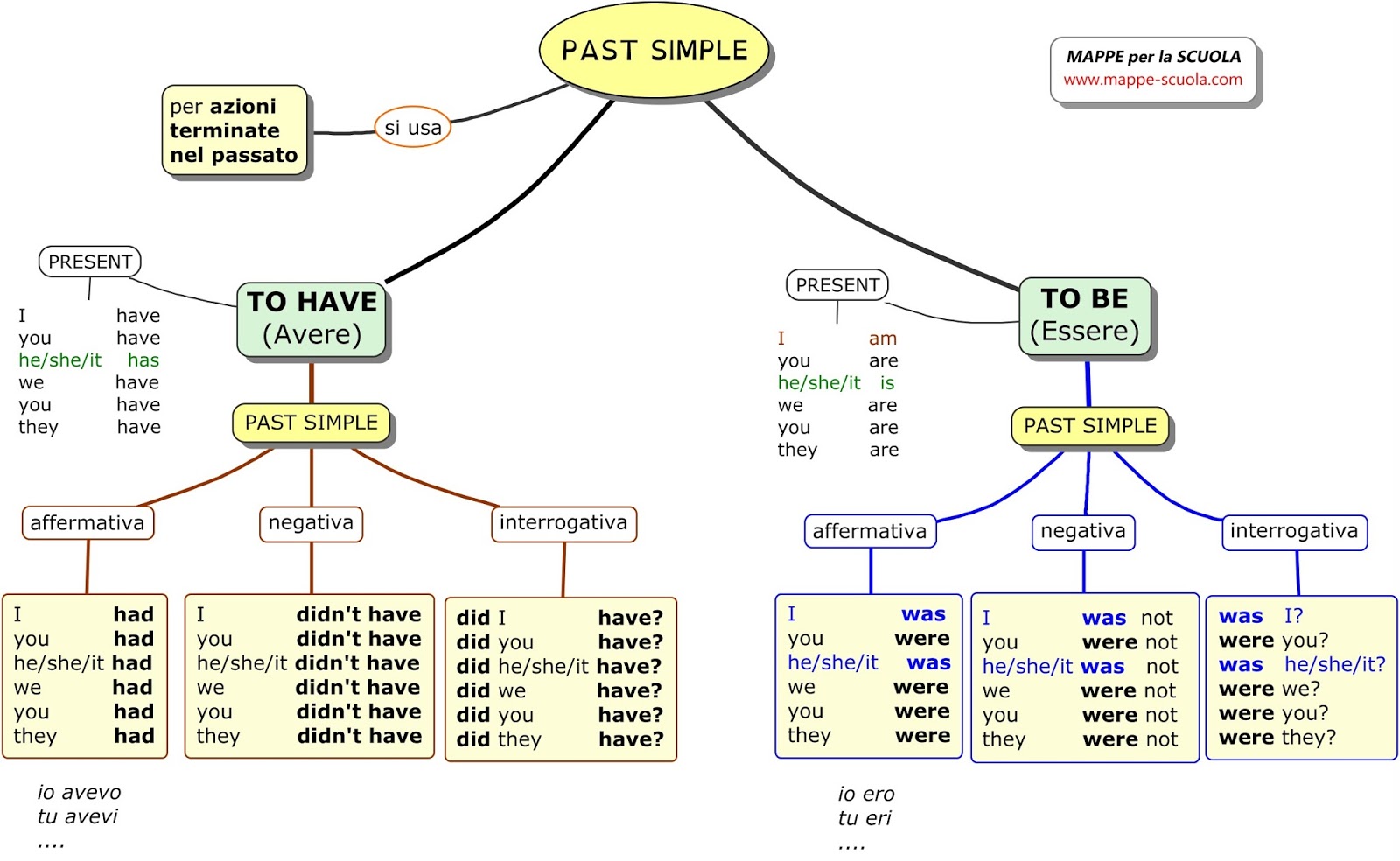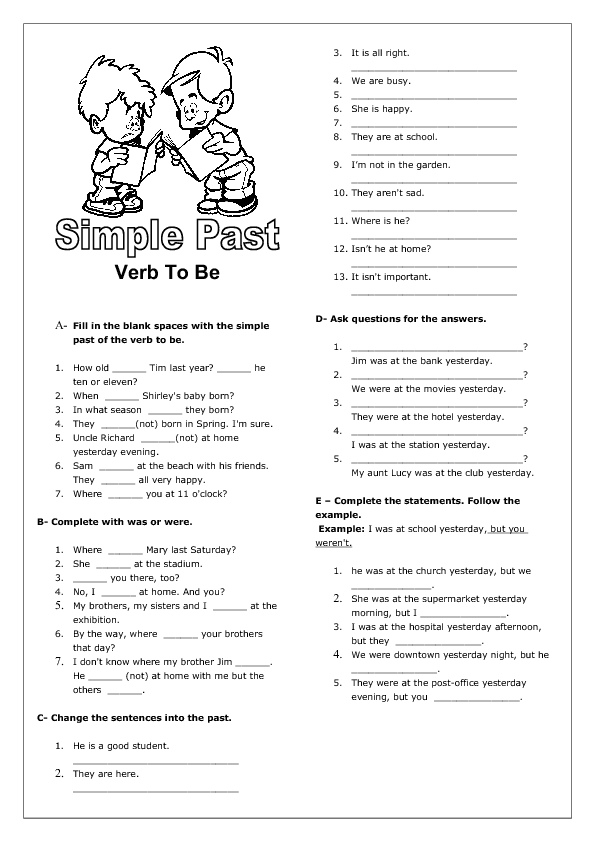Have you ever found yourself stumbling when talking about the past, unsure whether to use "was" or "were"? You're not alone! These two seemingly simple words often trip up even seasoned English speakers. But fear not, for mastering their usage is far from impossible.
In the world of English grammar, "was" and "were" are the heroes of past-tense descriptions. They help us paint vivid pictures of bygone days, from sharing childhood memories to recounting historical events. However, their superpower lies in their precision – each is used in specific situations, depending on the subject of the sentence.
Think of "was" and "were" as keys to unlocking different doors of the past. "Was" is the key for singular nouns and pronouns, like "I," "he," "she," and "it." For example, "Yesterday, I was at the park" or "He was a talented musician." On the other hand, "were" unlocks the door for plural nouns and pronouns, such as "we," "you," and "they." Imagine saying, "We were surprised by the news" or "They were excited about the trip."
Understanding the distinction between these two forms is crucial for clear and accurate communication about the past. Using the wrong one can lead to confusion and grammatical errors that might make your message less impactful.
In this comprehensive guide, we'll embark on a journey to conquer the intricacies of "was" and "were." We'll explore their origins, delve into common pitfalls, and equip you with practical tips to use them flawlessly. By the end, you'll be confident in your ability to navigate the past tense with ease and grace. Let's begin!
While the historical roots of "was" and "were" can be traced back to Old English, their importance in modern English remains paramount. They are fundamental building blocks for constructing grammatically sound sentences about past events.
One of the main issues learners face is remembering when to use each form correctly. A simple way to remember is to think of "were" as the plural partner of "was." Whenever you're dealing with a plural subject, "were" is usually the right choice. However, there are exceptions, particularly with the pronoun "you." Even when "you" refers to a single person, it always pairs with "were."
For instance, imagine you're talking to a friend about a recent concert. You wouldn't say, "You was amazing!" Instead, the correct phrase would be, "You were amazing!"
Advantages and Disadvantages of Mastering "Was" and "Were"
While there are no inherent disadvantages to using "was" and "were" correctly, the advantage is significant – it enhances your credibility as a speaker and writer. Let's delve deeper:
| Advantages | Disadvantages |
|---|---|
| Improved clarity and accuracy in communication | None, when used correctly! |
| Enhanced credibility in writing and speaking | |
| Stronger grasp of English grammar |
Best Practices for Using "Was" and "Were"
Here are some best practices to ensure you use "was" and "were" accurately:
- Identify the Subject: Pinpoint who or what is performing the action in the past.
- Singular or Plural?: Determine if the subject is singular (one) or plural (more than one).
- Apply the Rule: Use "was" for singular subjects (except "you") and "were" for plural subjects and "you."
- Consider the Context: Pay attention to the overall meaning of the sentence to ensure grammatical accuracy.
- Practice Consistently: Regularly using "was" and "were" in both spoken and written English will solidify your understanding.
Real Examples of "Was" and "Were" in Action
Let's look at some real-world examples to illustrate their usage:
- The cat was sleeping on the couch. (Singular subject: cat)
- The children were playing in the park. (Plural subject: children)
- I was at the library yesterday. (Singular subject: I)
- You were very helpful. (Always "were" with "you," even singular)
- We were excited about the trip. (Plural subject: We)
Common Challenges and Solutions
Even with the best intentions, mistakes happen! Here are some common challenges and their solutions:
- Challenge: Using "was" with plural subjects.
Solution: Remember "were" is for plural! - Challenge: Using "were" with singular subjects (other than "you").
Solution: "Was" is the singular hero! - Challenge: Forgetting "you" always takes "were."
Solution: "You were" is always right, even for one person. - Challenge: Confusing "was" and "were" in questions.
Solution: Match them to the question's subject. - Challenge: Overthinking and doubting yourself!
Solution: Practice makes perfect. The more you use them, the easier it becomes.
FAQs About "Was" and "Were"
Let's address some frequently asked questions:
- Q: Why is it important to use "was" and "were" correctly?
A: It ensures clear communication and showcases your grasp of grammar. - Q: Can I use contractions like "wasn't" and "weren't"?
A: Absolutely! Contractions are acceptable in informal writing and speech. - Q: Is there a trick to remember when to use "was" or "were"?
A: Think of "were" as the plural buddy of "was." Plural subject? Use "were"! - Q: What happens if I use the wrong one by mistake?
A: It might sound a little odd, but people usually understand the meaning. Keep practicing! - Q: Is there a specific situation where both "was" and "were" could be correct?
A: With the subjunctive mood, used for hypothetical situations, you might see "were" used with singular subjects, like "If I were you..." It's less common in everyday speech. - Q: What's the best way to practice using "was" and "were"?
A: Talk about your day using the past tense, write short stories, or do grammar exercises. - Q: Are there any online resources that can help me practice?
A: Yes! Websites like Grammarly, Khan Academy, and British Council LearnEnglish offer helpful exercises and explanations. - Q: I'm still a bit confused. Where can I get more help?
A: Don't hesitate to ask your teacher, tutor, or a grammar-savvy friend!
Tips and Tricks for Mastering "Was" and "Were"
Here are some handy tips to keep in mind:
- Visualize: Imagine "was" as a single raindrop and "were" as a refreshing spring shower – one for singular, one for plural!
- Listen Carefully: Pay attention to how native speakers use "was" and "were" in conversation.
- Read Regularly: The more you encounter them in books and articles, the more natural their usage will become.
Mastering the past tense in English doesn't have to be a daunting task. While "was" and "were" might seem like small words, their impact on your fluency is significant. By understanding their roles, recognizing common pitfalls, and practicing diligently, you can confidently navigate the past and express yourself with clarity and precision. Remember, even the most accomplished writers and speakers once grappled with these concepts. With patience and perseverance, you too can unlock the full potential of "was" and "were" and watch your language skills flourish. So embrace the journey of learning, and never be afraid to make mistakes – they are stepping stones to success!
Dark green profile picture whats the meaning how to use it
Behr rust paint colors transform your space
Crafting the perfect graduation speech examples and inspiration
simple past di to be - Khao Tick On
Like: Esercizi Per La Scuola Primaria - Khao Tick On
simple past di to be - Khao Tick On
Esercizi Inglese Pronomi Relativi Who Which That PDF con Soluzioni - Khao Tick On
simple past di to be - Khao Tick On
simple past di to be - Khao Tick On
simple past di to be - Khao Tick On
Mappe per la Scuola - Khao Tick On
simple past di to be - Khao Tick On
simple past di to be - Khao Tick On
simple past di to be - Khao Tick On
simple past di to be - Khao Tick On
simple past di to be - Khao Tick On
simple past di to be - Khao Tick On
simple past di to be - Khao Tick On














